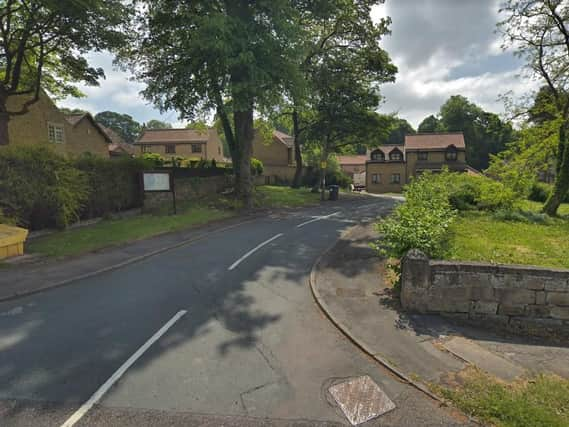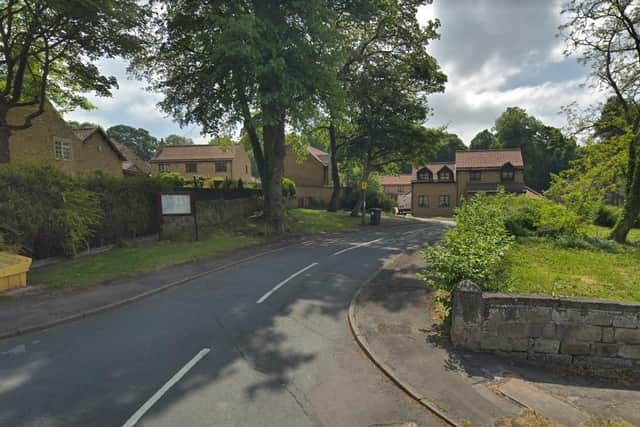This picturesque Doncaster street has been named one of the most dangerous in Britain


According to new figures released by Friends of the Earth, quiet Fir Tree Close in Hickleton is the fifth most polluted street in Britain – and is the second most dangerous street outside London for air quality.
The study found that a total of 1,845 places across the UK have toxic air pollution that breaks official safety limits for the polluting gas nitrogen dioxide.


Advertisement
Hide AdAdvertisement
Hide AdFir Tree Close is off the busy A635 Doncaster to Barnsley road which passes through Hickleton and which is used by hundreds of vehicles each day.
Nitrogen dioxide – which is the gas produced by cars, buses and lorries - particularly diesels - can trigger asthma attacks and cause breathing problems.
Now the analysis of pollution monitoring sites across the country reveals busy roads across Britain are up to three times higher than the official limit.
Britain’s worst pollution hotspot was outside Earls Court tube station in London where the annual average of 129.5 micrograms per cubic metre of air was triple that of the World Health Organization's 40 mcg limit.
Advertisement
Hide AdAdvertisement
Hide AdFriends of the Earth, which analysed the research said the country needs more clean air zones to restrict pollution - such as older models of polluting cars and vans - and to encourage non-polluting transportation such as walking and cycling.
Simon Bowens, clean air campaigner at Friends of the Earth, said: ‘It’s unforgivable that across the UK there are nearly two thousand locations over air quality limits, leaving millions of us breathing dangerously polluted air.
‘Air pollution is often an issue thought of as affecting only the biggest cities.
'The reality is that unacceptably toxic air can be found across much of the UK, even in smaller towns.
Advertisement
Hide AdAdvertisement
Hide Ad'It is harming the health of people across the country and is especially bad for young children whose lungs are still developing.
‘The government needs to step up and do more to help deal with this air pollution crisis - they can’t just carry on leaving the difficult decisions with local authorities, many of which are severely under-resourced.’
THE WORST 10 AREAS IN THE UK
UK locations ranked by annual average level of NO2 (in ug/m3) - the objective is 40ug/m3:
1. Earls Court Station, Kensington & Chelsea, London – 129.5
Advertisement
Hide AdAdvertisement
Hide Ad2. Junction North Circular Rd/Chartley Avenue, Brent, London – 115.39
3. IKEA, Hut, North Circular Road, Brent, London – 102.1
4. Neville Street (NW Tunnel entrance), Leeds – 99
5. Fir Tree Close, Hickleton, Doncaster– 96
6. Kensington H St/Kensington Church St, London – 94.5
7. Euston Road, Camden, London – 92.45
8. Strand, City of Westminster, London – 92
9. High Street, Harlesden, Brent, London – 91.83
10. Haddon Hall, Tower Bridge Road, Southwark, London – 90.79
THE WORST 10 AREAS OUTSIDE OF LONDON
UK locations (outside of London) ranked by annual average level of NO2 (in ug/m3):
1. Neville Street (NW Tunnel entrance), Leeds – 99
2. Fir Tree Close, Hickleton, Doncaster – 96
3. John O’Gaunts, Hickleton, Doncaster – 87
4. Hennef Way, Banbury, Oxfordshire – 84.8
5. Upper Stone Street, Maidstone – 79.3
6. Market Hill, Maldon, Essex – 78.97
7. North Street Clock Tower, Brighton – 77.9
8. Platform 3A/2B, Sheffield, Yorkshire– 77
9. Neville Street (NE Tunnel entrance), Leeds – 76
10. Holyhead Road, Coventry, Warwickshire – 75.6
The UK has been breaching EU pollution limits for nitrogen dioxide, much of which comes from diesel vehicles, since the rules came into effect in 2010.
Air pollution causes an estimated 40,000 premature deaths a year in the UK and is linked to health problems from childhood illnesses to heart disease and even dementia.
